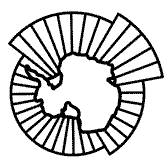Search results
-
Algunos aspectos biologicos relevantes a la explotacion de la merluza negra (Dissostichus eleginoides Smitt, 1898) en la zona economica exclusiva argentina y sector oceanico adyacente
Abstract: This work aims to the study of the distribution, size structure by depth, first ... eleginoides) in the Argentine Sea, and atempts some explanation by a trophic analysis of such distribution ... explained partially by canibalism and the size of the available preys at different depth. According to the ...
Meeting Document : WG-FSA-97/49 : Author(s): Almeyda, S.M., Prenski, L.B.
-
A proposal for a CCAMLR vessel monitoring system
, available onboard equipment and its use, and transmission and processing of position reports was provided by ... (Australia) and by the Inmarsat Organisation. A description of the CCAMLR VMS comprises the following issues ... implementation, which should be taken into account by the Commission in taking a decision on the establishment of ...
Meeting Document : CCAMLR-XIV/14 : Author(s): Secretariat
-
Demographic studies of Antarctic krill Euphausia superba Dana in the Cooperation and Cosmonaut Seas (Indian sector of the Southern Ocean)
Bertalanffy growth curves calculated for different areas are similar to those obtained by Australian ... was clearly dominated by individuals of age 4+. The coefficients of natural mortality (M) of E.superba ... in the Indian sector of the Southern Ocean, calculated by the methods of Alverson & Carney ...
Meeting Document : WG-Krill-94/16 : Author(s): E.A. Pakhomov (Ukraine)
-
A revised assessment of the impact of the krill fishery on penguins in the South Shetlands
penguins was also insignificant. Furthermore, less similarity between krill caught by trawlers and those ... captured by penguins was observed. The above mentioned results imply a low level of competition between the ... 3 tonnes/half-month period) is smaller by one or more orders of magnitude within the localized areas ...
Meeting Document : WG-Joint-94/17 : Author(s): T. Ichii, M. Naganobu and T. Ogishima (Japan)
-
The State of Exploited Fish Stocks in the Atlantic Sector of the Southern Ocean in 1988
of the 1960s by the Soviet Union mainly. Notothenia rossii marmorata was the target species in the ... 1986-88. N. rossii marmorat is the species mostly affected by the fishery. Stock size around South ... depleted by the fishery and are in need for conservation measures. P. br. guntheri is the only species for ...
Meeting Document : WG-FSA-88/14 : Author(s): K.-H. Kock and F.-W. Köster (FRG)
-
Ocean acidification and the Southern Ocean
assumes “business as usual”- emissions leading to 778 ppm of CO2 in the atmosphere by 2100- aragonite will ... , which assumes that atmospheric CO2 will only reach 563 ppm by 2100, the aragonite saturation horizon is ... likely to have shrunk from 730 to 60 m by 2100, with the entire Weddell Sea undersaturated with respect ...
Meeting Document : CCAMLR-XXIX/BG/24 : Author(s): ASOC Observer
-
Linking predator and prey behaviour: contrasts between Antarctic fur seals and macaroni penguins at South Georgia
highest proportion of fish in over 20 years of routine monitoring (46% by mass; particularly the myctophid ... constrained by the need to return and feed their offspring both predator species foraged to the northwest of ... more successful at exploiting krill. When unconstrained by chick-rearing (during March) penguins ...
Meeting Document : WG-EMM-10/P07 : Author(s): C.M. Waluda, M.A. Collins, A.D. Black, I.J. Staniland and P.N. Trathan
-
CCAMLR Science
CCAMLR Science is a peer-reviewed journal published annually by the Commission for the ... established by the CCAMLR Scientific Committee to bring the high quality and diversity of science that ... its subsidiary bodies. Each submission to the journal is initially reviewed by the Editorial Board and ...
Page : Site Section: Publications
-
Marine Debris
CCAMLR as the general health of the environment affects the species covered by the Convention. In ... packaging bands (used to secure bait boxes) and the injury to seabirds caused by the discharge of hooks in ... different types of refuse. This poster, highlighting the dangers posed to marine mammals by plastic debris ...
Page : Site Section: Science
-
Follow-up on infringements
should provide a link, preferably by electronic means, to the findings of the court (or equivalent ... ) giving details of the penalty and sanction imposed. Such details should be archived by the Secretariat ... ’ within the Secretariat of relevant national legislation enacted by CPs. Such information should be ...
Page : Site Section: The Organisation

